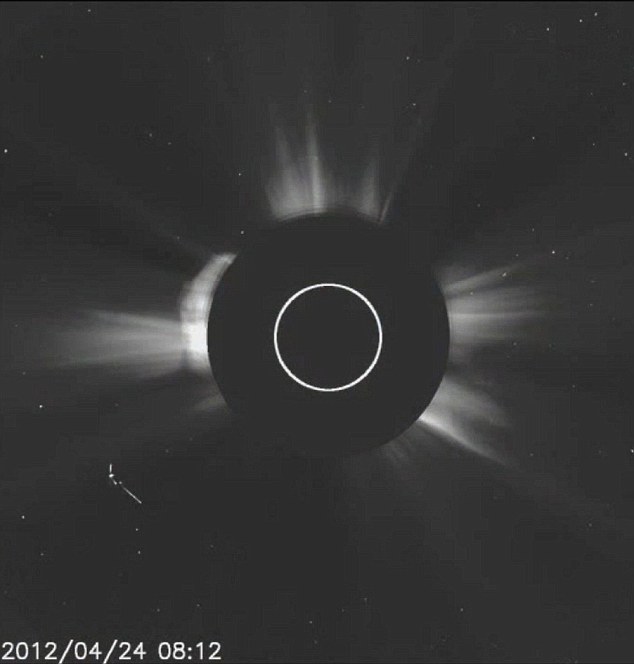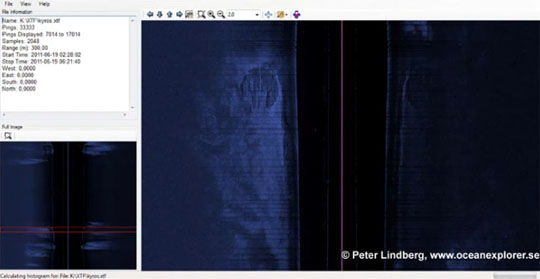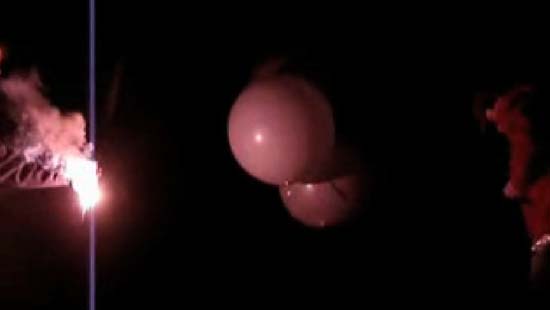UFO Sightings & News
UFOs have fascinated and puzzled people for decades, yet hard evidence seems ever elusive. Many people are convinced that not only are extraterrestrials visiting Earth, but that governments have perpetuated a top-secret global conspiracy to cover it up. Here's a look at UFOs throughout history.
Today, most people equate UFOs with extraterrestrial intelligence and advanced technologies, but this is a very recent idea. That's not to say that historically people did not report seeing unusual things in the skies, for they surely did: comets, meteors, eclipses and the like had been reported (and sometimes recorded) for millennia — in fact some researchers believe that the Star of Bethlehem may have been an illusion created by a merging of Jupiter and Saturn, which occurred right around Jesus' birth).
But it's only been in the past century or so that anybody assumed that unknown lights or objects in the sky were visitors from other planets. Several of the planets had been noticed for millennia, but were not thought of as places where other living creatures might reside (for example ancient Greeks and Romans thought the planets were gods).
Early science fiction writers like Jules Verne and Edgar Allan Poe fueled the public's interest in voyages to other worlds, and as technology developed some people began to wonder if that might not indeed be possible for advanced civilizations. The first reports of what could be called UFOs emerged in the late 1800s, though in those days they didn't use terms like "UFO" or "flying saucer," but instead "airships."
The most dramatic early UFO encounter occurred in 1897 Texas, when E.E. Haydon, a newspaper reporter for the Dallas Morning News, described an amazing encounter complete with a crashed spacecraft, dozens of eyewitnesses, a recovered dead Martian body, and metallic wreckage (50 years later a nearly identical story would circulate about a crash in the neighboring state of New Mexico). The fantastic tale unraveled when researchers could find no eyewitnesses to support Haydon's story, and nothing of the alien or the "several tons" of mysterious spacecraft wreckage was ever found. It turned out that Haydon had made the whole story up as a publicity stunt to attract tourists.
UFO sightings
Early newspaper hoaxes aside, there have been countless UFO reports over the decades, and a few of them stand out as especially important. The first report of a "flying saucer" dates back only to 1947 when a pilot named Kenneth Arnold reported seeing nine objects resembling boomerangs in the sky. He described their movement as "like a saucer if you skip it across the water," which a careless reporter misunderstood as saying that the objects themselves resembled "flying saucers," and that mistake launched many "flying saucer" reports in later decades. Investigators think that Arnold probably saw a flock of pelicans and misjudged their size, their large wings creating the "V" shape he described.
The most famous UFO crash allegedly occurred when something — skeptics say a top-secret spy balloon; believers say a spacecraft with alien pilots — crashed on a ranch in the desert outside of Roswell, New Mexico, in 1947, and the debate rages to this day.
Get the world’s most fascinating discoveries delivered straight to your inbox.
The first UFO abduction case — and to this day the most famous — was that of Barney and Betty Hill, an interracial couple who in 1961 claimed to have been chased down and abducted by a UFO. However, since there were no other eyewitnesses to the event and they didn't report the abduction at the time (only remembering it under hypnosis), many remain skeptical.
Another famous UFO sighting occurred near Phoenix, Arizona, in March 1997 when a series of bright lights were reported in the night skies. Though it is known that the military dropped flares over a nearby proving ground during routine exercises around the time of the sightings, UFO buffs dismiss the government's explanation of the lights and insist there's more to the story.
Since then, a host of UFO sightings have been reported. Here are a handful that in recent years got a lot of attention, with links to articles from the time:
Jan. 7, 2007: Strange lights over Arkansas fueled much speculation on the Internet until the Air Force debunked the UFO claims, explaining that flares had been dropped from airplanes as part of routine training.
April 21, 2008: Phoenix lights were reported again. It was a hoax, created by road flares tied to helium balloons. The hoaxer admitted it, and eyewitnesses reported seeing him do it.
Jan. 5, 2009: New Jersey UFOs that proved so baffling they were reported on the History Channel turned out to be helium balloons, red flares and fishing lines, all part of a social experiment. The men who perpetrated the hoax, Joe Rudy and Chris Russo, were fined $250 for creating what could have been a danger to the nearby Morristown airport.
October 13, 2010: UFOs over Manhattan turned out to be helium balloons that escaped from a party at a school in Mount Vernon.
Jan. 28, 2011: Videos of UFOs hovering over the Holy Land (the Dome of the Rock on Jerusalem's Temple Mount) was revealed as a hoax — the effects of video editing software's use were discovered.
July 2011: The sighting of a UFO on the ocean floor was attributed to a Swedish scientist, but that researcher, Peter Lindberg, merely said the thing he detected in blurry images was "completely round," an assertion not supported by the low-resolution sonar image. A second "anomaly" made the case seem even more bizarre, but no evidence has emerged to suggest alien origin.
April 2012: A UFO near the sun, spotted in a NASA image, turned out to be a camera glitch.
April 2012: A viral UFO video taken from a plane over South Korea likely showed a droplet of water on the airplane's window.
May 2012: A nephew of the famous Wayans brothers comedy team, Duayne "Shway ShWayans" Wayans, filmed a UFO over Studio City, Calif. But like many, many UFO sightings, this one turned out to be the planet Venus. In fact, even airline pilots have mistaken Venus for a UFO.
Official investigations
When UFO reports became more common (and in some cases achieved national and even international attention) the U.S. government began to pay attention.
Given that UFOs are literally "unidentified flying objects," the Pentagon's interest in the topic is both understandable and appropriate. After all, unknown objects over American skies could be a threat — whether their origin is Russia, North Korea or the Andromeda Galaxy. The Air Force investigated thousands of unexplained aerial reports between 1947 and 1969, eventually concluding that most of the "UFO" sightings involved clouds, stars, optical illusions, conventional aircraft or spy planes. A small percentage remained unexplained because of a lack of information.
In December 2017, The New York Times reported on the existence of a secret U.S. Department of Defense program called the Advanced Aerospace Threat Identification Program (AATIP). It began in 2007 and ended in 2012 when, according to Pentagon spokesman Thomas Crosson, "it was determined that there were other, higher priority issues that merited funding."
Much of the program and its conclusions have not been released, and it's not clear what if any useful information came from the effort. Several short videos of military jets encountering something they couldn't identify have been released by AATIP. Already some have suggested that distant jets might be the culprit, and in the past crowdsourced research has yielded answers to seemingly inexplicable phenomena in our skies; a "mystery missile" seen off the coast of California in November 2010, for example, stumped military experts at first but was later determined to be an ordinary commercial jet plane contrail seen from an odd angle.
The fact that the U.S. government had a program dedicated to researching unidentified craft and objects has caused many UFO buffs to triumphantly announce that they were right all along, that this finally proof that the wall of silence is breaking and the government coverup is cracking.
There is, however, significantly less here than meets the eye. The government routinely spends money to research (and sometimes promote) topics that turn out to have little or no evidence or scientific validity. There are hundreds of federal projects that have been funded despite never having been proven valid or effective, including the Star Wars missile defense program, abstinence-only sex education, and the DARE anti-drug program. The idea that there must be some validity to the project, or else it would not have been funded or renewed is laughable.
From the 1970s through the mid-1990s, the U.S. government had a secret project called Stargate, designed to explore the possibility of psychic powers and whether "remote viewers" could successfully spy on Russia during the Cold War. The research went on for about two decades, with little apparent success. Eventually, scientists who were asked to review the results concluded that psychic information was neither validated nor useful. Like AATIP, Project Stargate was soon shut down.
One possible clue as to why the $22 million program might have continued despite yielding no clear evidence of extraterrestrials is the financial incentive to keep it going. The New York Times noted that "The shadowy program . ..was largely funded at the request of Harry Reid, the Nevada Democrat who was the Senate majority leader at the time ... Most of the money went to an aerospace research company run by a billionaire entrepreneur and longtime friend of Mr. Reid's, Robert Bigelow, who is currently working with NASA to produce expandable craft for humans to use in space."
UFO psychology
It's not hard to understand why there are so many UFO sightings. After all, the only criterion for a UFO is that some "flying object" be "unidentified" by whoever is looking at it at the time. Any object seen in the sky, especially at night, can be very difficult to identify because of the limitations of human perception. Knowing how far away something is helps us determine its size and speed; that's why we know that moving cars seen at a distance aren't really smaller, nor are they moving slowly; it's simply an optical illusion. If the eyewitness doesn't know the distance, then he or she cannot determine the size. Is that thing or light in the sky 20 feet long and 200 yards away, or is it 200 feet long and a mile away? It's impossible to know, and this makes estimates of size, distance and speed of UFOs very unreliable. Even the planet Venus — at least 25 million miles away — has been mistaken for a UFO by pilots and others on many occasions.
Psychologists also know that our brains tend to "fill in" missing information, which can mislead us. For example, many sightings of three lights in the night sky are reported as appearing as a triangular spacecraft. The fact is that any three lights in the sky, whether connected or not, will form a triangle if you assume (without evidence) that each of those lights are fixed at the ends of three points. Had a witness seen four lights he or she would have assumed it was a rectangular-shaped object in the night sky above him; our brains sometimes make connections where none exist.
All that is needed to create a UFO sighting is one person who may not recognize a light or object in the sky. But just because one person — or even several people — can't immediately identify or explain something they see doesn't mean that someone else with more training or experience (or even the same person seeing the same object from a different angle) may not instantly recognize it. While it's possible that extraterrestrials in spacecraft exist and have visited Earth, the UFO sightings so far provide no real evidence. The lesson, as always, is that "unknown lights in the sky" is not the same as "extraterrestrial spacecraft."






